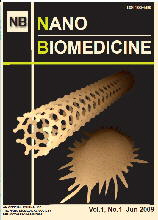Volume 7, Issue 2
Displaying 1-5 of 5 articles from this issue
- |<
- <
- 1
- >
- >|
ORIGINAL ARTICLES
-
Article type: ORIGINAL ARTICLE
2015 Volume 7 Issue 2 Pages 51-62
Published: 2015
Released on J-STAGE: May 08, 2016
Download PDF (946K) -
Article type: ORIGINAL ARTICLE
2015 Volume 7 Issue 2 Pages 63-71
Published: 2015
Released on J-STAGE: May 08, 2016
Download PDF (688K) -
Article type: ORIGINAL ARTICLE
2015 Volume 7 Issue 2 Pages 72-80
Published: 2015
Released on J-STAGE: May 08, 2016
Download PDF (2930K) -
Article type: ORIGINAL ARTICLE
2015 Volume 7 Issue 2 Pages 81-86
Published: 2015
Released on J-STAGE: May 08, 2016
Download PDF (520K) -
Article type: ORIGINAL ARTICLE
2015 Volume 7 Issue 2 Pages 87-92
Published: 2015
Released on J-STAGE: May 08, 2016
Download PDF (679K)
- |<
- <
- 1
- >
- >|
